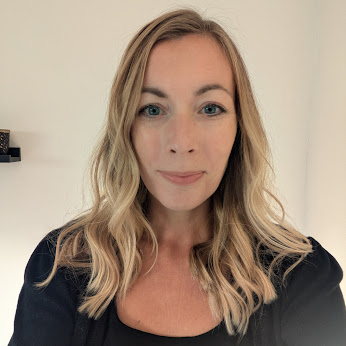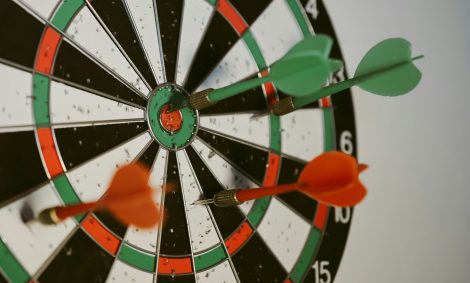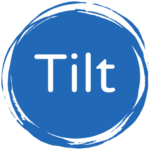Tearfund: From strategy on a shelf to a shared direction in action
When Cathy Winmill began planning how she would build Tearfund’s refreshed fundraising strategy, she knew one thing for certain, it must really live!
“The old strategy was not used, and was sitting dusty in a file. I didn’t even know how to find it…in fact, I had never actually read the whole strategy.”
This time, Cathy wanted a strategy that was alive in the organisation. A clear direction that leaders and teams would actually use to guide decisions, shape plans and connect their work. She wanted everyone in the 160-strong department, spanning fundraising, comms, media, marketing, operations, digital, supporter care, data and insight, to buy into it, own it and work towards it together.


The goal was ambitious: Develop a strategy that was not just written but lived. And to get there, Cathy wanted a process that put collaboration at the heart, working with teams as well as leaders so the end result reflected real needs and priorities across the group.
Choosing an approach that builds buy-in
Cathy knew of Tilt from their work with Tearfund’s Digital and Communications teams. That positive experience meant she was confident in trusting the process, even without knowing exactly what it would look like.
“I do not think I went in knowing that that would be the approach, necessarily… But I trusted the process, because I had seen that it helped on the other teams that had worked with Tilt.”
Tilt’s coaching approach was a key part of the appeal. For Cathy, this was not about outsourcing to a consultant. It was about working alongside someone who could guide, challenge and help her and her colleagues think differently, while leaving ownership in their hands.
“Having Julia and Tilt, who have a lot of experience working with other charities, bring coaching and mentoring approach provided really helpful insight and challenge.”
From the start, the delivery was flexible. One-to-one coaching, small group sessions and large workshops with up to 40 team leaders were used at different points. This mix meant Cathy could bring in Tilt’s support where it would make the most difference, whether behind-the-scenes preparation, live facilitation or collaborative design.
“We did not know at the beginning what that balance would be… so we worked it out as we went, deciding on the most effective way to do things.”
From scattered aims to shared focus
Early on, Cathy focused on radically simplifying their Objectives and Key Results (OKRs). The aim was to support teams to do fewer things better and focus efforts on what would deliver the most impact.
“We ended up with a much more focused set of OKRs than we had the previous year. They still were not perfect, but people bought into them. They were as focused as they could be without losing buy-in.”
That clarity paid off. Instead of each team interpreting the strategy differently, everyone began to speak the same language.
“In the past you would ask a member of the fundraising team what the goals were and ten people might say something different. Now they will all say these two things.”
This alignment meant tactical plans across the group were better connected, with less duplication and more shared priorities.
“There is just so much alignment. We have got the groundwork and the unity as a group to then tackle the ‘what does this mean?’ conversations.”


Building a vision people can repeat and believe in
Alongside clarifying goals, the department refined their shared vision: why they exist and what they are here to achieve. Rather than the vision being a ‘summary statement’ which can sometimes be diluted and non-specific, they designed the vision as something to help them make decisions and prioritise:
“We got to a really good vision… Julia helped us get a really good vision statement and get people bought into it. The whole group is now on board with that.”


Repeating and reinforcing that vision has helped bridge divides between fundraising and other parts of Tearfund’s work.
“We are better able to influence and help the rest of the organisation understand the importance of what we do. This is helping us to overcome the divide and I feel like we are building stronger connections with other departments.”
Collaboration across teams and levels: reducing silos
For a strategy to really live, it needs to be owned, not just by senior leaders but by the teams who will make it real in day-to-day work. Cathy placed equal importance on collaboration with leaders and with teams across the department.
Workshops on collaboration helped shift the culture further, building on earlier leadership development work. They explored questions like: “How can we work in the open? How can we support each other’s goals rather than working in silos?”
“There is now real alignment at senior leadership level, and then at team leader level as well. We have managed to build a good level of trust and working in the open that we have not had before at that level.”
By involving the 35+ team leaders in these conversations, Cathy began to distribute ownership for collaboration and culture change rather than holding it herself.
“I do not want to be the only person responsible… It is how to get the team leader group to feel a real ownership for working collaboratively and bringing the group with us.”
Leading differently through coaching
One of the most personal shifts for Cathy was in her own leadership style. She describes herself as naturally collaborative and supportive. Through coaching with Tilt she realised that, at times, being more decisive, giving clearer direction, and holding people to account could help create more momentum.
She also worked with the Senior Leadership Team to move towards deeper psychological safety, where people feel able to challenge and support each other constructively.
“Instead of going, ‘oh, it is fine’ instead being brave in calling each other out. Through this we’re moving toward a real deep trust. We’re more confident to hold each other to account and supportively challenge each other.”
She has also strengthened her coaching skills, now asking more challenging questions in performance conversations and supporting her direct reports to step into their “growth zone” rather than staying comfortable.
“I am not solving all their problems for them. I am encouraging them to think about what will make the most difference in their teams. I feel like I am pushing them a bit more into their growth zone.”


Final reflections
Looking ahead, Cathy’s priorities are to continue embedding more radical prioritisation into Tearfund’s processes and continuing to share ownership of collaboration across the leadership team.
Looking back, these wins, she says
“These wins are only possible when you make space to think, reflect and challenge existing ways of working…You are always going to be busy… and actually to take some time out to think and to have someone help you think is really, really helpful, and does not just happen without planning it in.”
Her advice to others is that even in the busiest periods, making time for this kind of work is essential if you want a strategy that is lived, not left on a shelf.



